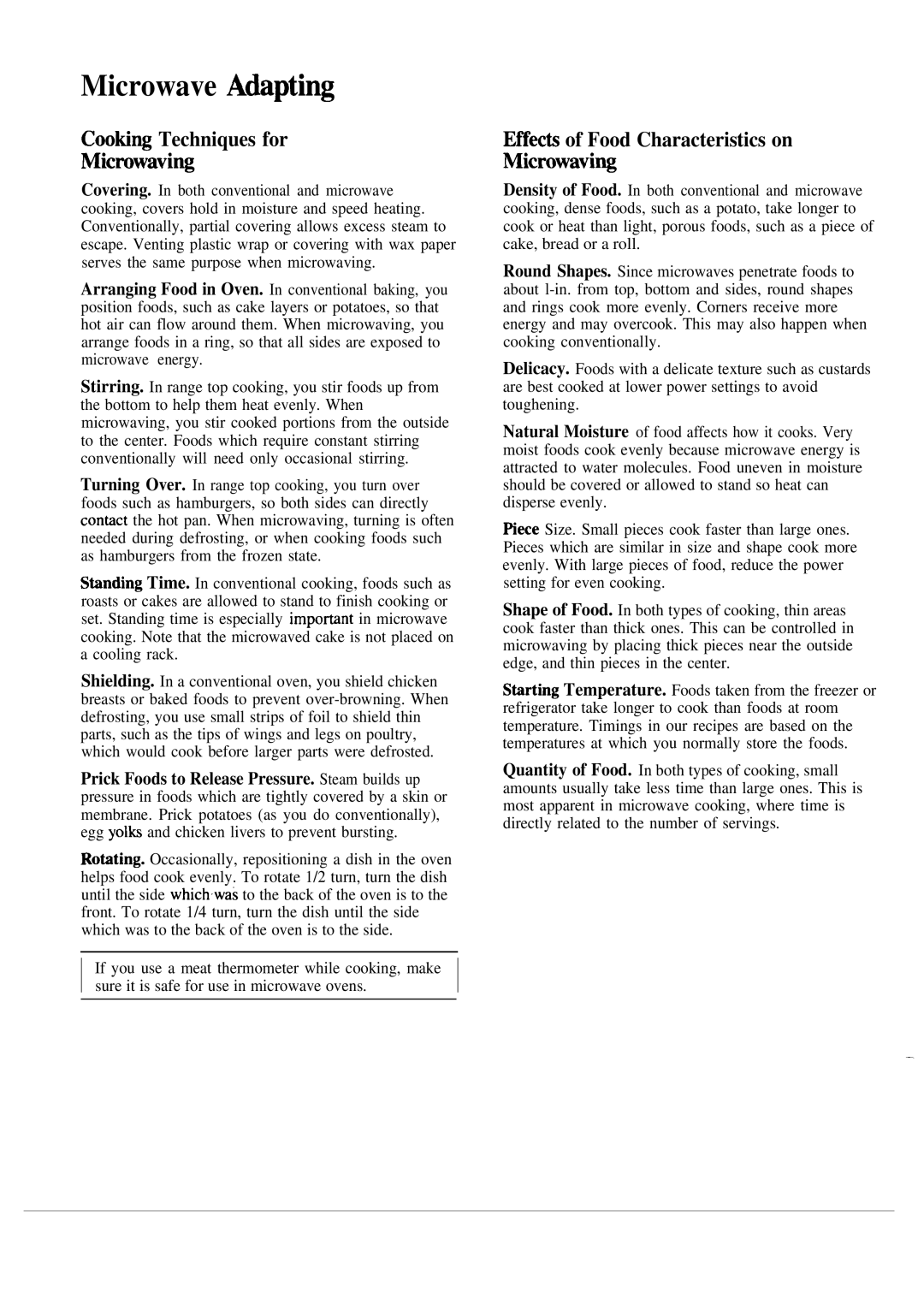164 D20~PO19, JVM130H specifications
The GE JVM130H,164 D20~PO19 is a versatile and efficient over-the-range microwave oven that combines modern technology with user-friendly features. Designed to enhance kitchen functionality, this model caters to the needs of those who appreciate both convenience and performance.One of the standout features of the GE JVM130H is its powerful 1.3 cubic feet capacity, which accommodates a variety of cooking tasks, from reheating leftovers to preparing meals. The microwave includes a 1000-watt power output, ensuring quick and even heating. This efficiency is further enhanced by its sensor cooking controls, which automatically adjust cooking time and power for optimal results based on the food’s moisture levels.
A notable technology in the JVM130H is the interior LED lighting, which provides clear visibility of the food being cooked. This energy-efficient lighting consumes less power than traditional bulbs while ensuring you can monitor your cooking without opening the door. Moreover, the unit features a two-speed venting system that effectively removes smoke, steam, and odors from the kitchen, allowing you to maintain a fresh cooking environment.
Additional characteristics of the JVM130H include its easy-to-clean ceramic enamel interior, which helps prevent food from sticking and simplifies the cleaning process. The microwave is equipped with a turntable that ensures even cooking by rotating food while it heats. The control panel is designed for ease of use, featuring straightforward buttons and a numeric keypad that facilitates easy navigation through various cooking options.
Safety is also a consideration with the JVM130H, as it includes a child lock feature, ensuring that little hands cannot accidentally engage the microwave. With its sleek design and modern finish, this model seamlessly integrates with contemporary kitchen decor.
In summary, the GE JVM130H,164 D20~PO19 is an all-around kitchen appliance that combines efficiency, functionality, and style. With its powerful cooking capabilities, user-friendly controls, and effective ventilation system, it stands out as a practical choice for anyone looking to enhance their culinary experience. Whether you are reheating dinner or preparing a quick snack, this microwave oven delivers reliability and convenience in one appealing package.

